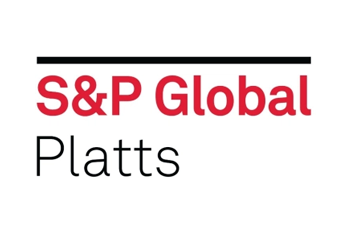Despite Softer Demand Growth, Latin American Product Imports Are Set to Remain Robust
 Latin American product imports are expected to remain strong the rest of the year as local refinery runs remain subdued. 4Q18 crude throughput is expected to increase 100 MB/D quarter-on-quarter but still be 140 MB/D down year-on-year. Mexican runs in 4Q18 are forecast at 690 MB/D, 115 MB/D higher year-on-year, still very low relative to historical averages. There is upside potential if Mexico begins importing light crude over the next two months. 4Q18 Brazilian crude runs are forecast at 1880 MB/D, 210 MB/D higher year-on-year. Demand for refined products is seen weaker in Latin America as economic activity slows. Latin American diesel demand is set to fall ~85 MB/D year-on-year in 4Q18, while gasoline is projected 50 MB/D lower year-on-year in the same period. Finally, gasoline imports into the region remain strong: set to be 50 MB/D higher year-on-year in 4Q18. Likewise, 4Q18 Latin American distillate imports are forecast 80 MB/D higher year-on-year.
Latin American product imports are expected to remain strong the rest of the year as local refinery runs remain subdued. 4Q18 crude throughput is expected to increase 100 MB/D quarter-on-quarter but still be 140 MB/D down year-on-year. Mexican runs in 4Q18 are forecast at 690 MB/D, 115 MB/D higher year-on-year, still very low relative to historical averages. There is upside potential if Mexico begins importing light crude over the next two months. 4Q18 Brazilian crude runs are forecast at 1880 MB/D, 210 MB/D higher year-on-year. Demand for refined products is seen weaker in Latin America as economic activity slows. Latin American diesel demand is set to fall ~85 MB/D year-on-year in 4Q18, while gasoline is projected 50 MB/D lower year-on-year in the same period. Finally, gasoline imports into the region remain strong: set to be 50 MB/D higher year-on-year in 4Q18. Likewise, 4Q18 Latin American distillate imports are forecast 80 MB/D higher year-on-year.
CY19 Outlook Remains Bearish Amid Emerging Signs of Capital Spending by Producers
With seaborne coal prices likely to be supported in the short term, and exports likely to run at elevated levels into CY19, we continue to expect little downside for US Eastern coal prices through 4Q18 and into 1Q19. Our view on CY19 US coal prices remains bearish. We forecast that CY19 coal demand will fall by 55 MMst year-on-year as Henry Hub gas prices fall nearly 4% year-on-year, and, with US producers enjoying solid margins, signs emerged this month that producers in NAPP and the ILB are eyeing increased production that could result in oversupply.
Electric Vehicle Sales and Policy Scorecard
The Electric Vehicle Sales and Policy Scorecard 1) provides data on EV sales from the previous quarter, 2) shows Platts Analytics reference case fossil fuel displacement forecast and EV adoption forecast for major auto markets, and 3) assesses the potential impact of major policy initiatives and investments on EV adoption momentum at the national and company level.
In 2Q 2018 EVs accounted for roughly 2% of global sales, up 77% year-on-year from the same quarter in 2017. China and the EU lead sales in both the short and long term, driven by favorable economic factors and strong policy support.
China GDP slows to 6.5% in Q3 due to weak investments
Latest data on Chinese economic growth were disappointing. China – U.S. trade tensions ramped up during the third quarter, but large parts of the recent economic weakness appeared due to internal factors, and not external ones. Specifically, infrastructure investment became a major drag. Exports to China from Japan and Korea (leading indicators of exports by China) were weak in September, but this was largely due to transitory factors. U.S. industrial production became sluggish in the last two months, but that is not yet a cause for worry in all likelihood.
US propane stocks build, with limited relief from exports
 US propane/propylene stocks increased by 2.04 million barrels during the week ended October 12, according to EIA data. The build brings total inventories to 82.3 million barrels, in line with the peak stock level in 2017, which was reached in early September after Hurricane Harvey shut LPG export terminals on the US Gulf Coast. Inventories may continue to build through the end of October this year, as stronger production year-over-year is not being offset by appreciable increases in product supplied and exports. While four-week average production is up by 230,000 b/d year over year, product supplied and exports have remained in line with year-ago levels. The EIA reported exports of 979,000 b/d last week, compared with Platts Analytics’ estimate of 1.02 million b/d based on ship tracking data. Spot arbitrage margins for USGC propane have been intermittently favorable to Asia and Europe, even as VLGC freight rates to Asia have increased by $14/mt over the past month.
US propane/propylene stocks increased by 2.04 million barrels during the week ended October 12, according to EIA data. The build brings total inventories to 82.3 million barrels, in line with the peak stock level in 2017, which was reached in early September after Hurricane Harvey shut LPG export terminals on the US Gulf Coast. Inventories may continue to build through the end of October this year, as stronger production year-over-year is not being offset by appreciable increases in product supplied and exports. While four-week average production is up by 230,000 b/d year over year, product supplied and exports have remained in line with year-ago levels. The EIA reported exports of 979,000 b/d last week, compared with Platts Analytics’ estimate of 1.02 million b/d based on ship tracking data. Spot arbitrage margins for USGC propane have been intermittently favorable to Asia and Europe, even as VLGC freight rates to Asia have increased by $14/mt over the past month.
U.S. Ethanol Prices Steady
U.S. ethanol prices were relatively flat last week. The Trump Administration directed the EPA to initiate a rulemaking to consider expanding Reid Vapor Pressure (RVP) waivers for fuel blends containing gasoline with up to 15% ethanol. Green Plains entered into an agreement to sell three of its ethanol plants to Valero. In the last two weeks of September, only 27.6 million tons of sugarcane was crushed in Brazil’s key Center South region. Chicago biodiesel prices reached a five-month high before retreating.
US Gas Weekly Report
The NYMEX/ICE non-commercial futures net long:short ratio reached 1.17 on October 9, up sharply from its most recent low of 0.88 set just a few weeks earlier on September 18. The reported speculative short position fell by nearly 58 thousand contracts during this period, while outright long holdings increased by close to 57 thousand lots. The underlying buying tied to this ~115 thousand-lot position shift — driven by both fundamentals and technical indicators — has clearly been a factor underpinning the NYMEX rally that lifted the nearby by ~60¢.
Stocks nearly flat week-on-week
Overall commercial stocks built by 2.98 MMB for the latest week. Crude stocks built more than expected (6.49 MMB), due to lower than anticipated crude exports. Crude inventories are currently only 40 MMB lower than last season and are expected to continue to build this week (+5.4 MMB) as USGC production - previously impacted by hurricane Michael – has been almost completely restored. Crude stocks at Cushing increased by 1.8 MMB - very close to our forecast - to 28.6 MM barrels, building for the fourth consecutive week. As expected, WTI structure has flattened dramatically as a result. For this week, demand for crude is expected to remain constant in the area, while net flows are expected to increase, causing Cushing stocks to build even faster by 2.0 MMB. If stock builds were to surprise to the upside, then WTI structure could potentially flip into mild contango. Production was reported at 10.4 MMB/D for the L48 and 499 MB/D for Alaska (from 486 MB/D during the previous week), rounded to 10.9 MMB/D in total. L48 was primarily impacted by Hurricane Michael, which forced up to ~700 MB/D of production shut-ins as it passed through the Gulf of Mexico.
Soybean Reversal
Given the early-week rally up to $8.92 basis November futures, it probably felt worse than an 11 cent loss on the week for soybean bulls at Friday’s $8.5675 close. The “problem” moving forward will be the lack of news between now and the November 8th WASDE as the market focuses on South American planting pace and weather, along with twice-weekly export figures that cover shipments and sales. If White House economic advisor Larry Kudlow is correct there will be no export help forthcoming from the Chinese between now and the G-20 in very late November as frustrations mount on the lack of response from Beijing. By the time the Xi/Trump meeting indeed takes place in Argentina the U.S. mid-term elections will have come and gone, a possible goal of the Chinese who apparently believe that a Democratic “win” will put pressure on Washington from internal forces.
High Algerian imports and strong LNG sendouts are keeping the Italian system balanced despite low Russian flow
Since the end of Tarvisio maintenance (September 25th October 16th), Russian flows have not recovered to pre-maintenance levels, as the PSV DA price has remained considerably below TTF MA. Moreover, during the latest outage, a combination of strong Algerian flows, high LNG sendouts and warm temperatures kept the Italian system balanced. Looking ahead into November and December, we expect Algerian gas and LNG sendouts to play a key role in balancing the Italian system.
Economics is Forcing More Russian Volumes to Stay in Europe – With More to Come
From Yamal, 30-day loading rates have reached as high as 125% of capacity on September 26th or 52-Mcm/d. This is increasingly important for Europe, particularly during winter time as more and more volumes pass through the continent’s terminals and waters. With Europe being the closest major buyer in winter time, Europe stands to benefit, particularly as reload economics are increasingly veering away from reloading to Asia. This is making the incentive to keep volumes in Europe ever greater. For the moment, reloads from Northwest Europe are now 54% of Yamal deliveries to Northwest Europe, which coincides well with the recent sharp turn in reload profitability. In mid-summer, this ratio was more like 200%, indicating that Russia is becoming a significant supplier to Northwest Europe.
Low hydro output and thermal constraints bullish factors for Italian prices
Belgian tightness has been a bullish driver of prices in N.W. Europe in recent weeks and this dynamic has continued in Week 42 following the drop in Belgian nuclear availability to the historical low level of 1GW. High N.W. European prices are therefore expected to continue in the near term, but low hydro output and supply constraints are having an even larger impact on Italy, with prices consistently exceeding those in N.W. Europe. The nature of these drivers and the capacity market still on hold leaves some upside risk in November.
Coal Prices Rebound on Winter Fears, Chinese Demand Growth Fades
Seaborne coal prices began last week by extending on the bearish streak that occurred the previous week, although the market rebounded strongly over the second half of the week. Initially, weaker oil and gas prices pulled coal prices lower, with CIF ARA prices falling to a low of $98.30/mt on Tuesday. Market sentiment was also bearish early in the week, on worries that Chinese import restrictions will be punitive over the balance of the year. However, the market turned sharply higher over the second half of last week, despite softness in oil and gas prices. The rebound in pricing last week undid most of the downshift that occurred during the previous week, although prices, particularly FOB Newcastle remain below their peak. Electricity demand growth in China faded in September, falling to 4.6% year-on-year growth from 7.3% growth in August. Sizeable growth in non-thermal generation pulled fossil generation (overwhelmingly coal-fired) growth down to just 3.7%.
In Japan, large crude build from record low stocks with another drop in runs
Crude runs in Japan dropped again on the week, with a fall of 125 MB/D. Crude imports rose from very low levels and crude stocks built a sharp 6.5 MMBbls from record lows. Finished product stocks rose modestly, with a moderate draw in naphtha and a more modest draw in fuel oil being offset by builds in gasoline, gasoil, and jet-kero. Refining margins have begun to improve as runs fall, while marketing margins improved on the week and remain above average.
Some Mixed Signals on Credit and Stress
The S&P 500 was unchanged on the week, but the swings were rather large. Credit metrics were modestly mixed. Commodities were modestly lower, with energy and industrial metals lagging, while precious metals gained. The dollar strengthened about 0.6%. Of note has been a continuing resolution of the divergence between the interest rate yield structure and financial equity performance. Also of note was a move upward in the Saudi riyal forward FX rate and their sovereign CDS quotes. Italian bond yields continue to edge higher with the beginning of some spillover impact into peripheral European sovereigns.
U.S. Ethanol stocks build to a near record 24.1 million barrels
U.S. ethanol production dropped by 29 MB/D last week, falling to a six-month low 1,011 MB/D. Stocks built by another 109 thousand barrels to a near-record 24.1 million barrels. Inventories are 2.65 million barrels higher than they were at this time last year, the largest year-on-year differential since early January. Ethanol-blended gasoline production increased by 196 MB/D to 9,234 MB/D due to higher gasoline output.
U.S. Proppant Costs Going Down Despite Rising Demand
Proppant demand has nearly tripled in the past five years as a result of longer well laterals and higher sand concentration. It is expected to continue to increase in 2019 and reach close to 120 MM tons/year. However, instead of proppant costs increasing with growing demand, they have started to decrease as a result of an oversupply of sand from new local mines and the Permian slowdown due to takeaway capacity limitations. It is estimated that 5 to 10 MM tons/year of capacity has already been shut in and spot prices for Northern White sand from the Great Lakes area have decreased by as much of 35%. In addition, supply is likely to continue to outgrow demand for the next couple of years considering the additional new mines that have been announced or are being planned. Lower proppant costs would help breakevens, but slowing productivity gains (because of drilling in non-core areas and well interference) would offset the gains.
Global Equities Modestly Changed
Global equities were modestly changed, but there was a broad range of sector and regional performance. In the U.S., the market was largely unchanged, but the housing and retail tracking indices fell 2.5-3.5%, while energy was lower by 2%. Consumer staples and utilities gained 3-4%, with strong performance by the “defensive” indictor. Internationally, Europe and Japan were modestly changed, but Norway fell back 2.7%, while China, emerging markets, and emerging Asia, all underperformed.
October weather: U.S. and Europe warm, Japan cold. Heating oil demand ~50 MB/D lower than 10-year average, but significantly higher than last year
The new heating season is off to a warm start in the U.S. and Europe while Japan is cold. With half the month completed and a second half forecast, October is expected to be 1% warmer than the 10-year normal and 11% warmer on a 30-year-normal basis.
Despite low Canadian crude prices, we could see production losses of only 100-200 MB/D
Crude prices in Canada plunged in recent weeks due to a perfect storm of rising production, takeaway constraints, and Midwest refinery maintenance. Western Canadian Select (WCS) at Hardisty is trading at $20/Bbl (~$50 discount to WTI) while Syncrude Sweet Premium (SSP) is ~$45/Bbl ($25/Bbl less WTI). We do not expect a substantial immediate production response. Oil sands operators will hold off as long as they can. Shutting in volumes also incurs costs. However, some high-cost conventional production could see shut-ins should netbacks near zero. Combined with reduced drilling, we may ultimately see losses of 100-200 MB/D by the middle of next year.
Asian Oil Demand Growth Expectedly Improves Again
Major Asian oil demand growth again accelerated in our latest snapshot from 386 MB/D to 576 MB/D. It was the second month of accelerating growth. Even so, it underperformed expectations for growth of about 740 MB/D. Chinese demand in the individual month of September came in under forecast by 98 MB/D, India undershot by 133 MB/D, while Korean demand in August underperformed by 102 MB/D. Major Asian country product demand growth is expected to post an acceleration to an average of 900 MB/D for the remainder of the year and then ease back to 500-550 MB/D in 1Q19. For 2018, major Asian country product demand growth is expected to be 575 MB/D, slower than 2017 growth of 710 MB/D. Total Asian demand growth in 2018 is expected to be 830 MB/D, down from the 1,080 MB/D seen in 2017. Data actuals cover the three-month period July-Sept for China and India, while Japan, Taiwan, and Korea cover data for June-Aug.
Register to attend S&P Global Platts University. (Formerly PIRA University) The New York City session will be held December 4-5, 2018. If you want a keen understanding of the landscape, fundamental drivers, market mechanisms, price dynamics, and function of global oil markets, S&P Global Platts University is a sound investment. LEARN MORE.
The information above is part of S&P Global Platts Analytics weekly Energy Market Recap – which alerts readers to our current analysis of energy markets around the world as well as the key economic and political factors driving those markets. To read S&P Global Platts Market Recap first, subscribe here.


